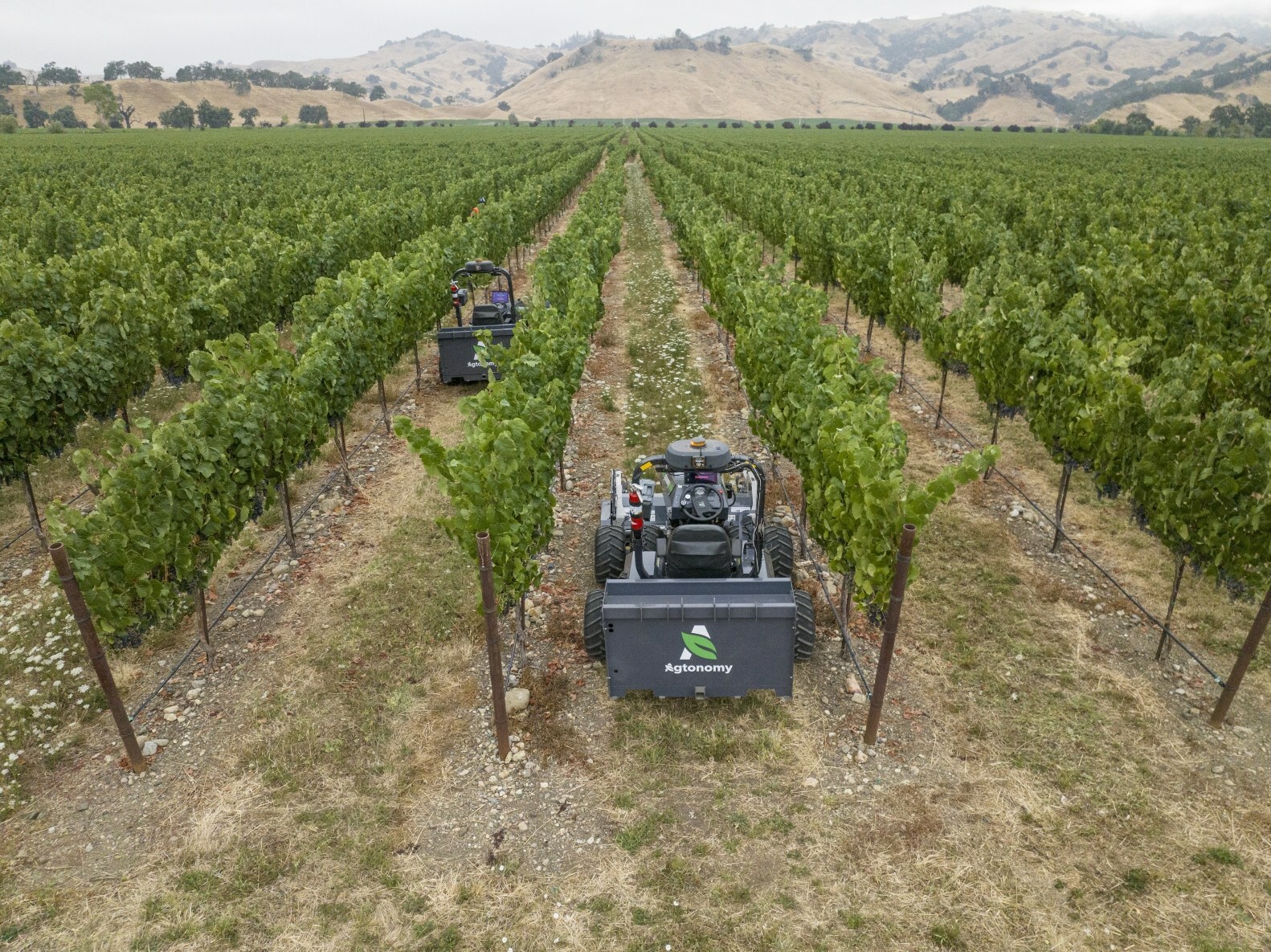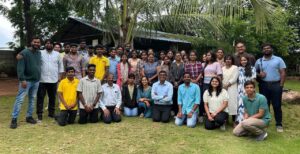Tim Bucher is the cofounder and CEO of Agtonomy, a California-based, software, services and technology company enabling autonomy in agriculture.
The views expressed in this article are the author’s own and do not necessarily represent those of AgFunderNews.
I have one word to say about what’s happening in agriculture: “Finally!” At a time when every penny counts for farmers, we are finally able to democratize AI in this important industry.
After decades of promises, the convergence of cutting-edge technology, scalable manufacturing, and farmers’ urgent need for solutions has propelled AI in agriculture to a tipping point. The industry is on the brink of mass adoption, with implications that could reshape farming, food systems and global sustainability.
Recent developments in the agtech sector highlight ever-present challenges faced by startups in this space. Despite building impressive technologies, companies have struggled with the gap between innovation and market adoption, largely due to unscalable business models that couldn’t withstand market pressures.
The current economic environment has further exacerbated these challenges. However, the underlying value of ag robotics and automation remains significant, and customer demand is strong.
In January, I joined a panel at the Consumer Electronics Show (CES) called “AI or Die.” It was eye-opening to see how tech leaders are no longer just talking about consumer gadgets—they see agriculture as the next frontier to make a lasting impact. As someone who’s spent decades with one foot in Silicon Valley and the other on a farm, I can tell you: farming is no longer “old-school.” It’s the ultimate testbed for AI innovation.
Why we need physical AI
“Physical AI,” in the form of autonomous machines doing critical farm tasks, is delivering real results on farms today. By combining data collection followed by data analytics, user-friendly applications, and true precision robotic equipment, we’re tackling the labor challenges and climate impacts that keep farmers up at night—all the while making farming more efficient and profitable. This isn’t just an incremental improvement, it’s transformative.
Agriculture requires a lot of data. Years ago, the cost of data analytics was more expensive than data collection. Now it’s more expensive to collect the data, which is why we need physical AI to enable robots to collect the data so that better analytics can be done on the terabytes collected in each field.
Let’s take apples as an example of how AI is helping growers like never before.
Data collection has been done for some time in order to detect diseases and other issues. However, AI sensors going through the orchard can now also enable more precise crop load management.
Early in the growing season, a farmer can now get analytics of each blossom count and position on every tree to ensure the optimum crop load based on apple variety and tree size. Growers can then “thin” the crop on a tree-by-tree basis such that the remaining fruit positions ripen to their optimal color and flavor. Apples for juice don’t need to look pretty, but apples to eat do and the grower gets paid more for the latter.
Such crop analytics help the farmer optimize the crop load that can result in tens of millions of dollars increase in their revenue or simply make the difference between ending the year with a profit or once again being in the red.

The rise of the AI ‘farm agent’
Despite recent setbacks in the industry, the ag robotics market is poised for growth.
Ongoing labor shortages, rising production costs, and the need for greater sustainability continue to drive adoption. The convergence of these factors with advancements in AI and robotics technology presents significant opportunities for innovation and growth in the sector.
Farming ecosystems are like intricate video games—full of variables, challenges, and opportunities that require strategic thinking and quick decisions to stay alive.
Imagine an AI-powered farm as an interconnected command center managed in part by the AI “farm agent.” The farm agent takes input from many sources such as environmental data, crop analytics, soil conditions, available autonomous equipment, and a myriad of other data sources. It can then provide the farmer with not only recommendations of what should be done at what exact time; once the farmer hits the “easy” button, the farm agent can also dispatch the equipment to get the job done.
The farmer remains in control but now has a dashboard of sorts which allows them to carry out some of the most critical and expensive tasks needed on their farm.
‘The most innovative industry on earth’
On my own farm, Trattore Farms located in Northern California, we’re using multiple types of technology to manage equipment and tasks on the farm, from computer-controlled fermentation tanks to autonomous tractors which use computer vision to exploit the structure of the crop itself to safely navigate and farm around that crop with accuracy.
Finding labor has always been my challenge at Trattore, but now with Starlink, aerial imagery, autonomous equipment, AI, and a lot of other tech, I can keep the farm going with a much smaller labor force than I’ve ever had in the past. Fewer people are working in agriculture every day, yet the last time I checked, we all must eat, which is why this dynamic is forcing us to perfect automated solutions for agriculture at an exponentially accelerated pace.
In ag, we deal with a lot of GPS- and Internet-denied environments, and have had to come up with solutions that can still operate in those environments. Advances in LiDAR, cameras, and on-board computers now allow us to layer sophisticated computer vision that delivers reliable, accurate performance even in the most challenging farming conditions (and, yes, that includes dust). It will all soon culminate in the farm agent being able to combine trillions of data inputs and convert them into jobs and tasks that the farmer can manage from one command center.
For years, we’ve envisioned what AI and automation could do for the farm. Now, I can literally see the light at the end of the tunnel. AI is accelerating research, synthesizing data, and pinpointing opportunities faster than ever before. If you think agriculture is stuck in the past, it’s time to see it for what it really is: the most innovative industry on Earth.
Agtech: the next generation
But let me be clear: for autonomy to bring real value to agriculture today, we must think about tractors and farm tools like farmers do. We need to collaborate with the brands farmers already know and trust. And here’s the exciting part: the next generation of farmers are tech-forward and eager to access these new tools. They’ve grown up with computers, smartphones and now AI-assistants, and they see the potential for these technologies to revolutionize their farms. By providing them with cutting-edge AI solutions, we’re not just improving farm operations, we’re attracting young, innovative minds back to agriculture. Imagine this: all ag job openings may one day state “video game experience” as a job requirement.
The AI revolution in farming isn’t just about efficiency, it’s a hat trick for farm profitability, global sustainability and more nutritious food for generations to come. It’s about empowering the next generation of farmers with tools that make agriculture not just profitable, but exciting and forward-thinking.
We’re not just changing how we farm; we’re redefining what’s possible—and profitable—in agriculture. And trust me, you ain’t seen nothing yet!




